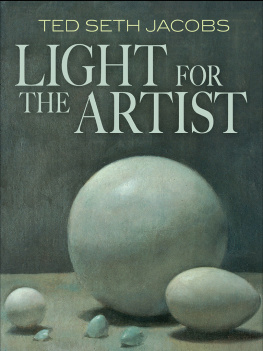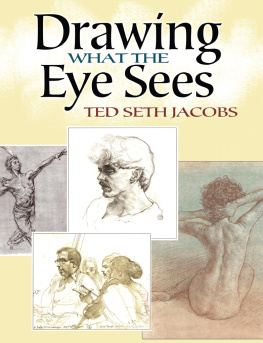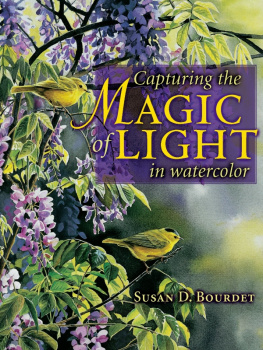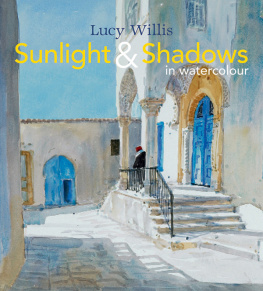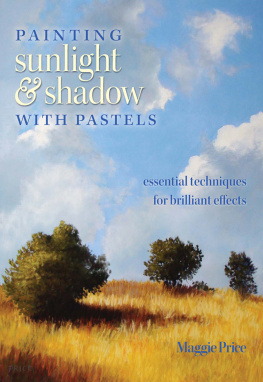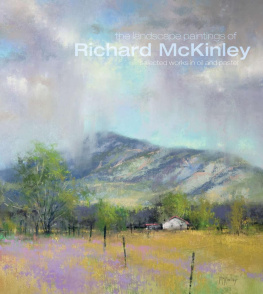Ted Seth Jacobs - Light for the Artist
Here you can read online Ted Seth Jacobs - Light for the Artist full text of the book (entire story) in english for free. Download pdf and epub, get meaning, cover and reviews about this ebook. year: 2014, publisher: Dover Publications, genre: Art / Computer. Description of the work, (preface) as well as reviews are available. Best literature library LitArk.com created for fans of good reading and offers a wide selection of genres:
Romance novel
Science fiction
Adventure
Detective
Science
History
Home and family
Prose
Art
Politics
Computer
Non-fiction
Religion
Business
Children
Humor
Choose a favorite category and find really read worthwhile books. Enjoy immersion in the world of imagination, feel the emotions of the characters or learn something new for yourself, make an fascinating discovery.
- Book:Light for the Artist
- Author:
- Publisher:Dover Publications
- Genre:
- Year:2014
- Rating:5 / 5
- Favourites:Add to favourites
- Your mark:
- 100
- 1
- 2
- 3
- 4
- 5
Light for the Artist: summary, description and annotation
We offer to read an annotation, description, summary or preface (depends on what the author of the book "Light for the Artist" wrote himself). If you haven't found the necessary information about the book — write in the comments, we will try to find it.
Intermediate and advanced art students receive a broad vocabulary of effects with this in-depth study of light. Topics include basics, use of light to define form and space, field effects, colored light, and many other subjects. Diagrams and paintings illustrate applications of principles to figure, still life, and landscape paintings.
Light for the Artist — read online for free the complete book (whole text) full work
Below is the text of the book, divided by pages. System saving the place of the last page read, allows you to conveniently read the book "Light for the Artist" online for free, without having to search again every time where you left off. Put a bookmark, and you can go to the page where you finished reading at any time.
Font size:
Interval:
Bookmark:
THE ARTIST
TED SETH JACOBS
DOVER PUBLICATIONS, INC.
MINEOLA, NEW YORK
MINORI WITH ROSES, black and sanguine conte on prepared paper, 16 24 (40.6 61.0 cm), 1976
CHANTAL, black conte on prepared paper, 17 15 (43.2 38.1 cm), 1986
Copyright
Copyright 1988 by Ted Seth Jacobs
All rights reserved.
Bibliographical Note
This Dover edition, first published in 2014, is an unabridged republication of the work originally published by Watson-Guptill Publications, New York, in 1988.
Library of Congress Cataloging-in-Publication Data
Jacobs, Ted Seth.
Light for the artist / Ted Seth Jacobs.
pages cm
Includes index.
Summary: Intermediate and advanced art students receive a broad vocabulary of effects with this in-depth study of light. Topics include basics, use of light to define form and space, field effects, colored light, and many other subjects. Diagrams and paintings illustrate applications of principles to figure, still life, and landscape paintingsProvided by publisher.
eISBN-13: 978-0-486-77998-0
1. ArtTechnique. 2. Visual perception. 3. Light in art. 4. Light. I. Title.
N7430.5.J33 2014
750.1'8dc23
2013032900
Manufactured in the United States by Courier Corporation
49304001 2014
www.doverpublications.com
M y fellow students are encouraged to develop and improve upon what I have presented here, and so this short study is dedicated to all those artists of the future who will become members of a very ancient fraternity, by carrying forward the search for an understanding of light.
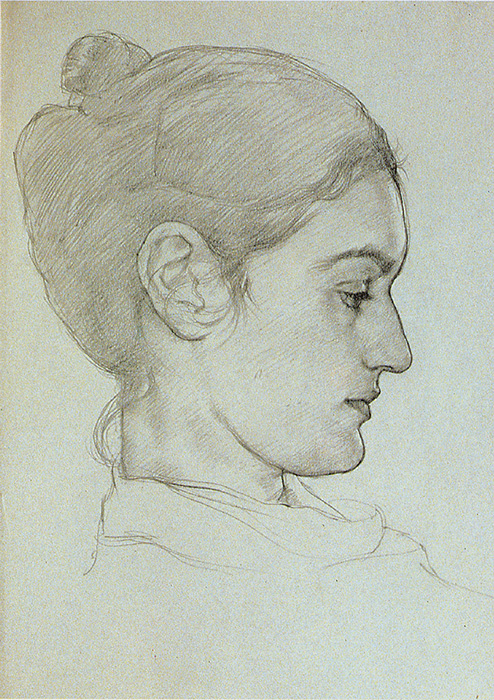
RUTH DEVICO, pencil, 14 10 (35.6 25.4 cm), 1980
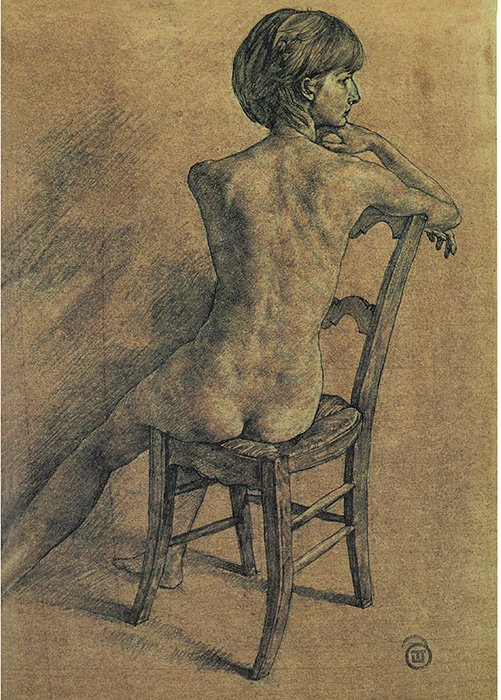
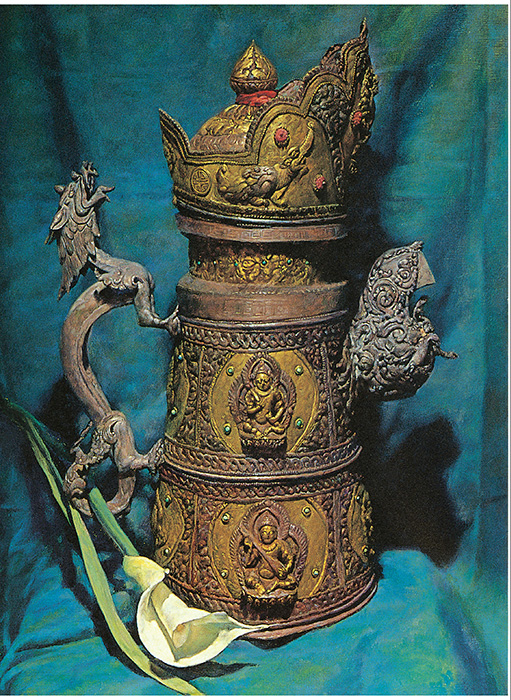
OFFERING, oil on canvas applied to panel, 27 23 (68.6 58.4 cm), 1988 (work in progress)
ALTHOUGH I AM NOT a research scholar I and do not pretend to have an exhaustive knowledge of the field, I have not yet seen a book designed for the artist that treats the subject of light in great depth and detail. In the books I have found, light generally occupies only a relatively brief chapter. This lack is curious and unfortunate, since the artist who wishes to suggest what is seen is necessarily involved with the actions and effects of light. Also, in many of the chapters on light effects that I have read, the principles given did not seem to agree with what I saw in nature. Too often, writers and teachers put together an artificial system, which produces an artificial look. These systems are usually coherent within themselves but are not based upon what we see. I have tried, to the best of my abilities, to base my conclusions on long and careful observation. This book is a greatly expanded and detailed development of the brief section on light in my previous work, Drawing with an Open Mind.
This is not a book about how to paint or draw in the strict sense of the words. Although there are some indications about method, the real purpose here is to give you an understanding of what you see. If you know how to look, you can work out how to get that vision down on canvas. It is much more important to understand the underlying principles and philosophy. As your deep understanding develops, you will naturally learn which methods and materials are best for you.
This is not a book about expressing your ideas or creating art. I would prefer to give you the means, the intellectual tools, so that you will be freer to express your nature. Learning the actions of light is as important to the artist as mastering the scales is to a musician. Without that mastery, expression is blocked; with it, the musician can sing freely and play out the subtlest nuances of feeling. I want to give you a vocabulary of light effects. Without it, how can you express yourself?
After forty years of varied teaching experience, it is apparent to me that many weaknesses and erroneous tendencies are virtually universal. I hope that the information in this book will help guide the artist to a clearer understanding of light and form.
As you might expect, many of the actions of light described here have been known for centuries. However, since the advent of nonrepresentational art, a large body of past knowledge about light, including some very basic ideas, has been virtually lost. This phenomenon is observed over and over in art schoolseven among students who have been studying for many years. For this reason, I presume to hope that besides the student, even the professional artist may find here useful material about light. Very frequently my students remark that even after years in art schools, they never before heard of many of the principles I teachincluding some I think of as very basic.
Perhaps photographers and cin-ematographers will also find it useful to have a clearer exposition of the principles underlying light effects. Grasping these principles will greatly improve your ability to convey emotion and meaning through the orchestration of light effects. No matter what your level of experience, whether beginner, advanced, or professional, I think that you will find very useful, and sometimes surprising, material in this book.
Here, as with my previous book, I wish to show you the profound differences between the visual images transmitted through the eye and the vast, complex, deeply ingrained symbolic conceptions that we attach to these images. It is my belief that most of our difficulties in drawing and paintingand perhaps in life!arise from our inability to clearly distinguish these two functions. Although it is very difficult in practice to separate word from image, to the extent that we succeed, life seems to become much clearer and lighter.
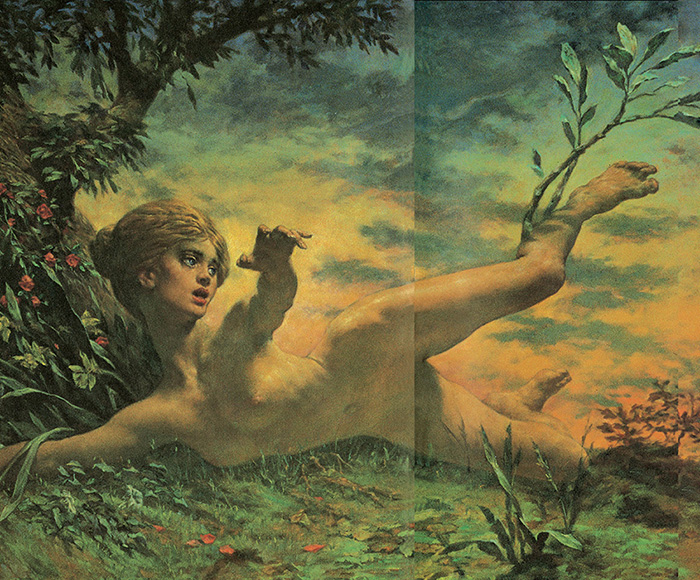
DAPHNE, oil on canvas, 29 45 (73.7 114.3 cm), 1988 (work in progress)
LIGHT, ALTHOUGH it constitutes such a large part of our sensory information and is virtually omnipresent, may, paradoxically, remain consciously unnoticed. It may be assumed that one of our first impressions upon entering this world might be of light. It is the companion of our waking hours. Without it, we are encouraged to enter the world of sleep. Our whole conception of existence and the world around us is linked with light. Our perception of thingswhat we call the outer worldinsofar as it is visual, is made only of light. This visual grasp of our experience is so deeply ingrained that we easily overlook the factor of light as we think and react in relation to perceived objects. We customarily dont react as directly to light as we do to the world it reveals. This tendency to identify ourselves with the objects of perception, rather than with the process of perception and its medium of light, causes us enormous difficulties when we try to paint what we see.
O ur perception of existence is not, of course, only visual. Besides what we register by sight, through its medium of light, our conceptions of our own existence and the so-called outer world are formed also by touch, taste, smell, hearing, and our various faculties of imagination and cognition, along with whatever other psychic powers we may possess. However, for the artist who wishes to suggest how things look, the important element is lightthe key to the visual process.
Font size:
Interval:
Bookmark:
Similar books «Light for the Artist»
Look at similar books to Light for the Artist. We have selected literature similar in name and meaning in the hope of providing readers with more options to find new, interesting, not yet read works.
Discussion, reviews of the book Light for the Artist and just readers' own opinions. Leave your comments, write what you think about the work, its meaning or the main characters. Specify what exactly you liked and what you didn't like, and why you think so.

